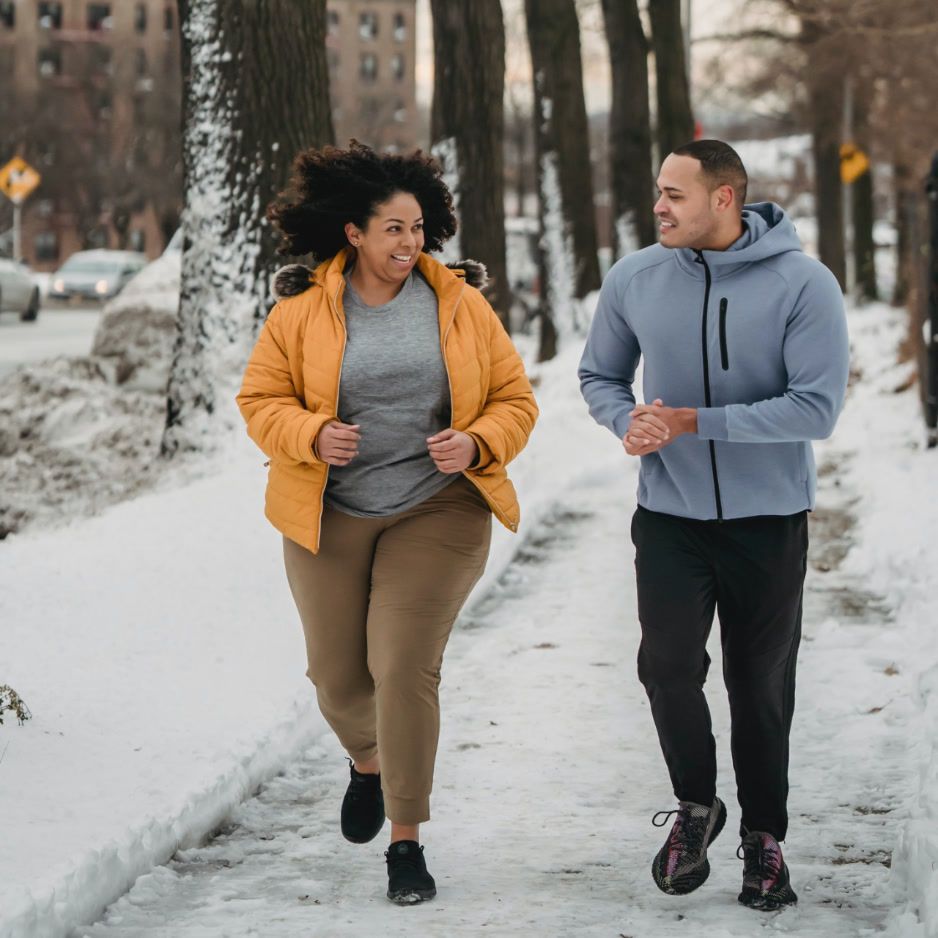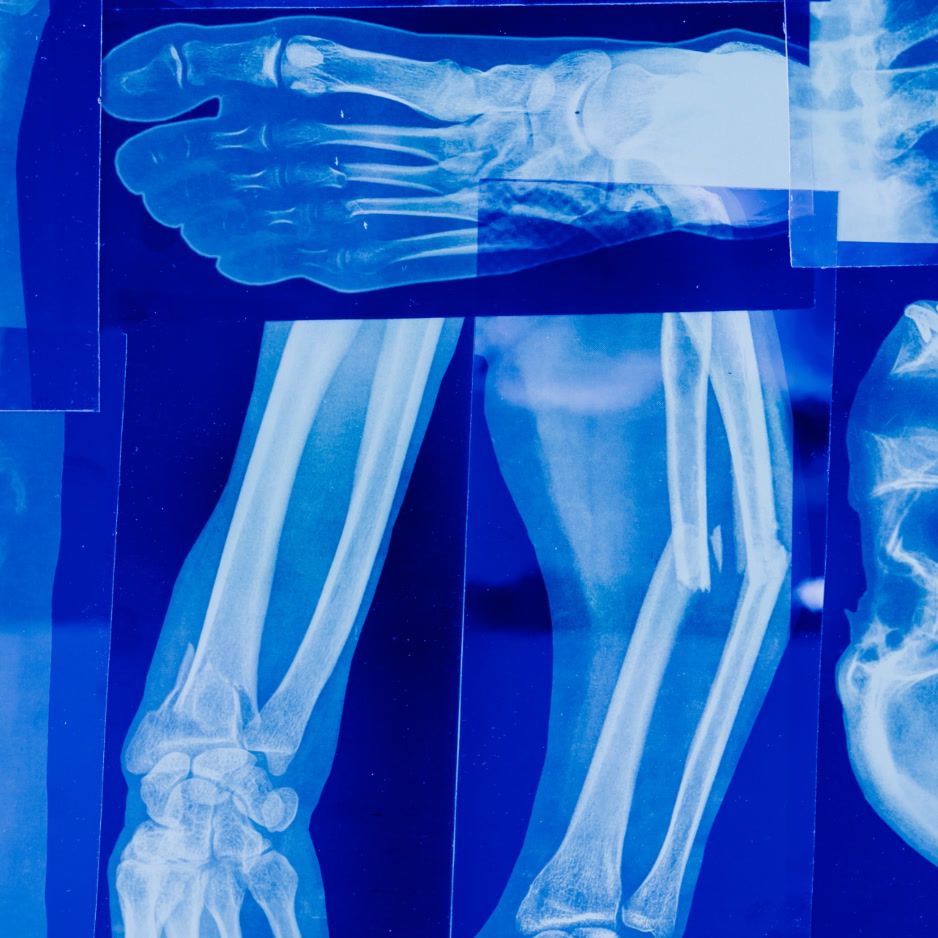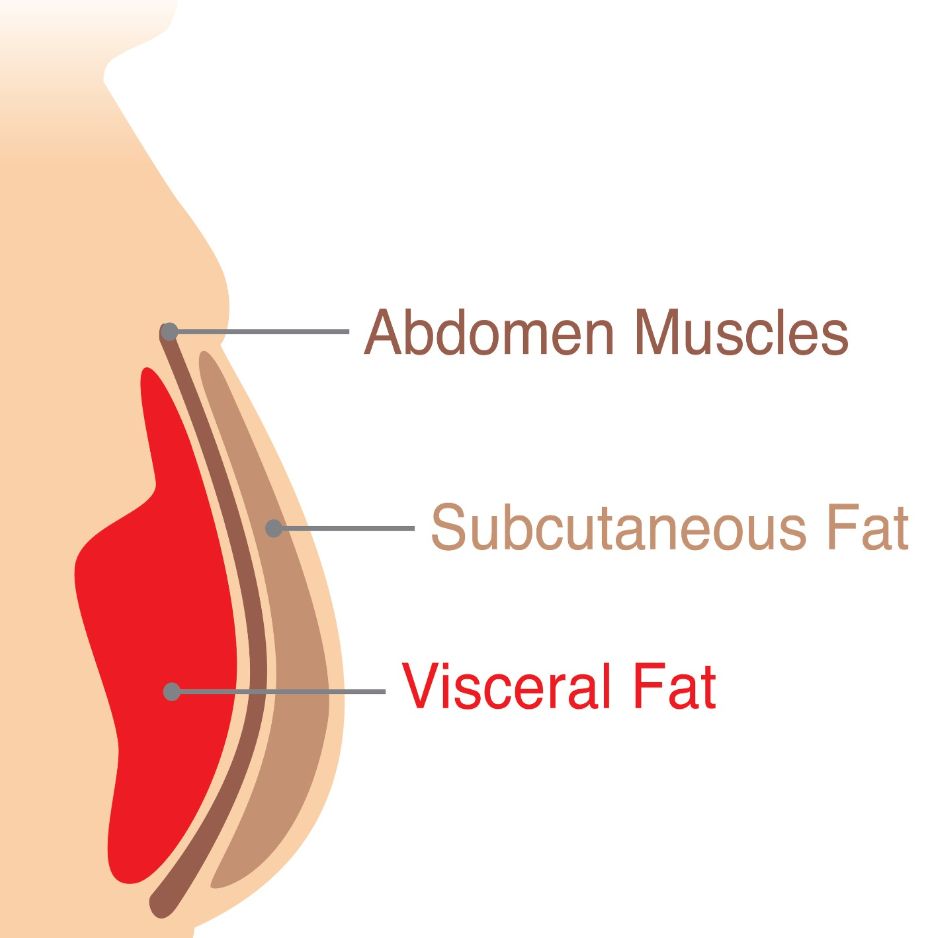Shoulder Workouts: Build Strong, Sculpted Delts
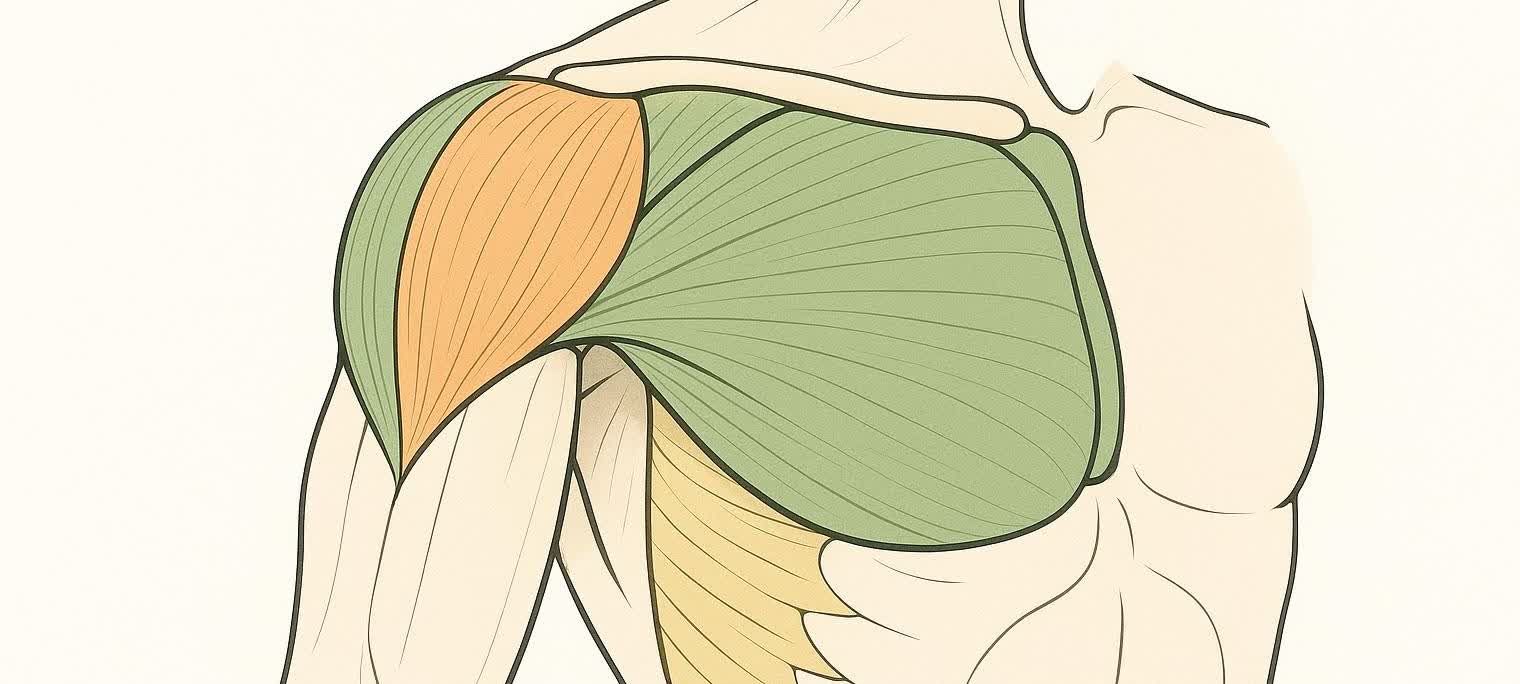
Shoulder Workouts: Build Strong, Sculpted Delts
Effective shoulder workouts build muscle, improve posture, and support long-term joint health. This guide breaks down evidence-backed exercises, program templates, and mobility drills that will add eye-catching muscle and keep your shoulders moving well for years.
TL;DR – Top Shoulder-Building Moves
Electromyography (EMG) research from the American Council on Exercise pinpointed several exercises with the highest deltoid activation (ACE, 2014). We’ve combined those findings with a physical-therapy favorite for shoulder health to create a quick-start list:
- Dumbbell Shoulder Press – strongest anterior-delt activation (ACE)
- 45° Incline Row – strongly activates medial and posterior delts (ACE)
- Seated Rear Lateral Raise – isolates posterior delts (ACE)
- Bent-Arm Lateral Raise – targets medial delts (ACE)
- Face Pull – promotes rotator-cuff stability (widely recommended by physical therapists for shoulder prehab)
Perform 3–4 sets of 6–12 reps, 1–2 × per week, and progressively add load or reps.
Shoulder Anatomy 101 – Why Variety Matters
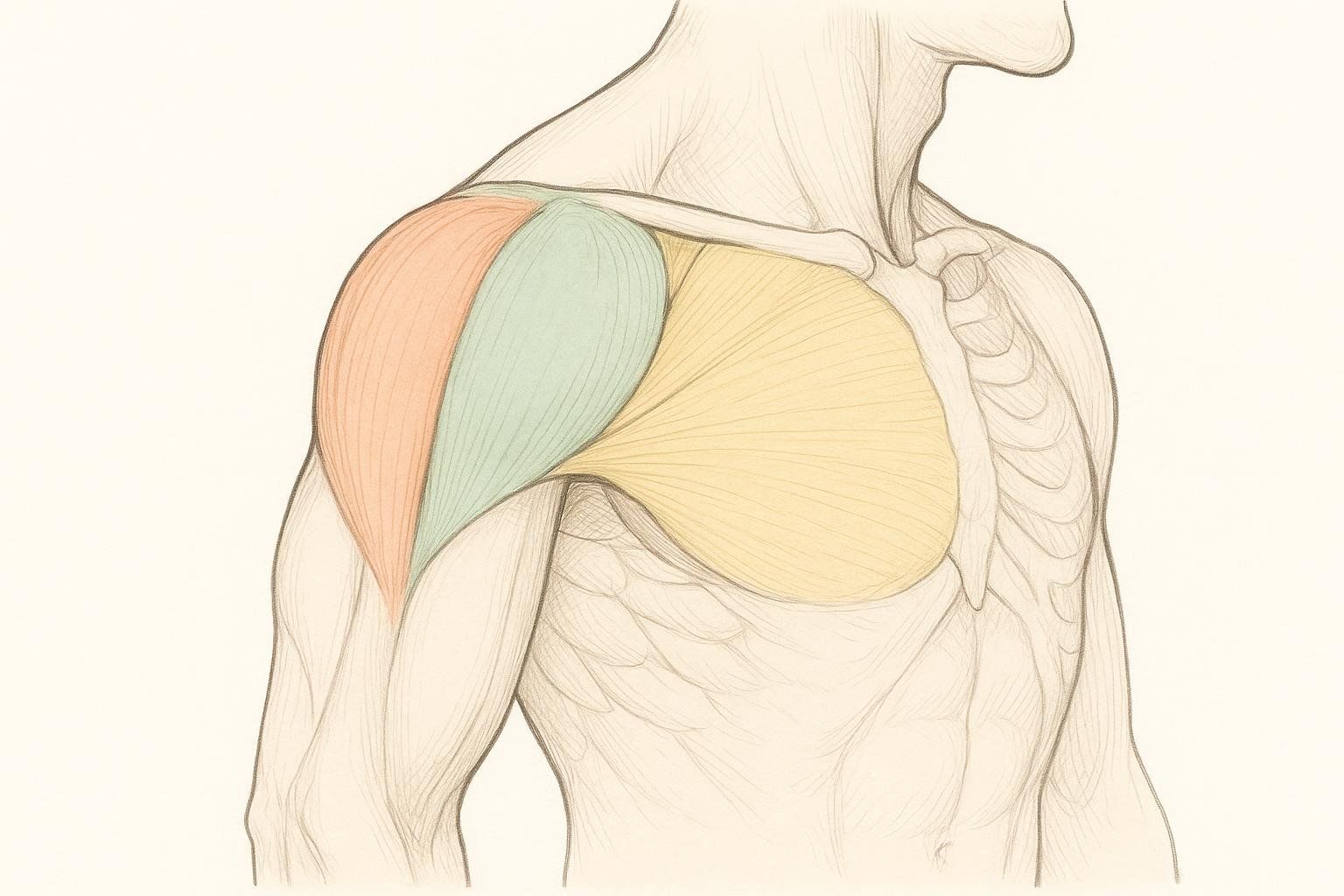
Your “shoulder” isn’t just one muscle. The deltoid has three distinct segments:
| Segment | Primary Action | Example Exercise |
|---|---|---|
| Anterior (front) | Shoulder flexion & overhead pressing | Dumbbell Shoulder Press |
| Medial (side) | Arm abduction | Lateral Raise |
| Posterior (rear) | Horizontal abduction & external rotation | Seated Rear Lateral Raise |
Supporting players include the rotator cuff (supraspinatus, infraspinatus, teres minor, subscapularis) and scapular stabilizers (traps, serratus anterior). Neglecting any region is a recipe for imbalances, plateaus, or injury.
Exercise Library: 10 Must-Know Shoulder Moves
Pro Tip: Perform a thorough warm-up (see Mobility section) before loading these patterns.
1. Overhead Barbell Press
Equipment: Barbell & rack
Muscles: Anterior deltoid, triceps, upper traps
How-to:
- Set the bar at upper-chest height.
- Grip just outside shoulder width; brace the core.
- Press straight up, finishing with biceps next to ears.
- Lower to clavicle level with control.
Common errors: Over-arching the low back; flaring the elbows; pushing the bar forward.
2. Dumbbell Shoulder Press
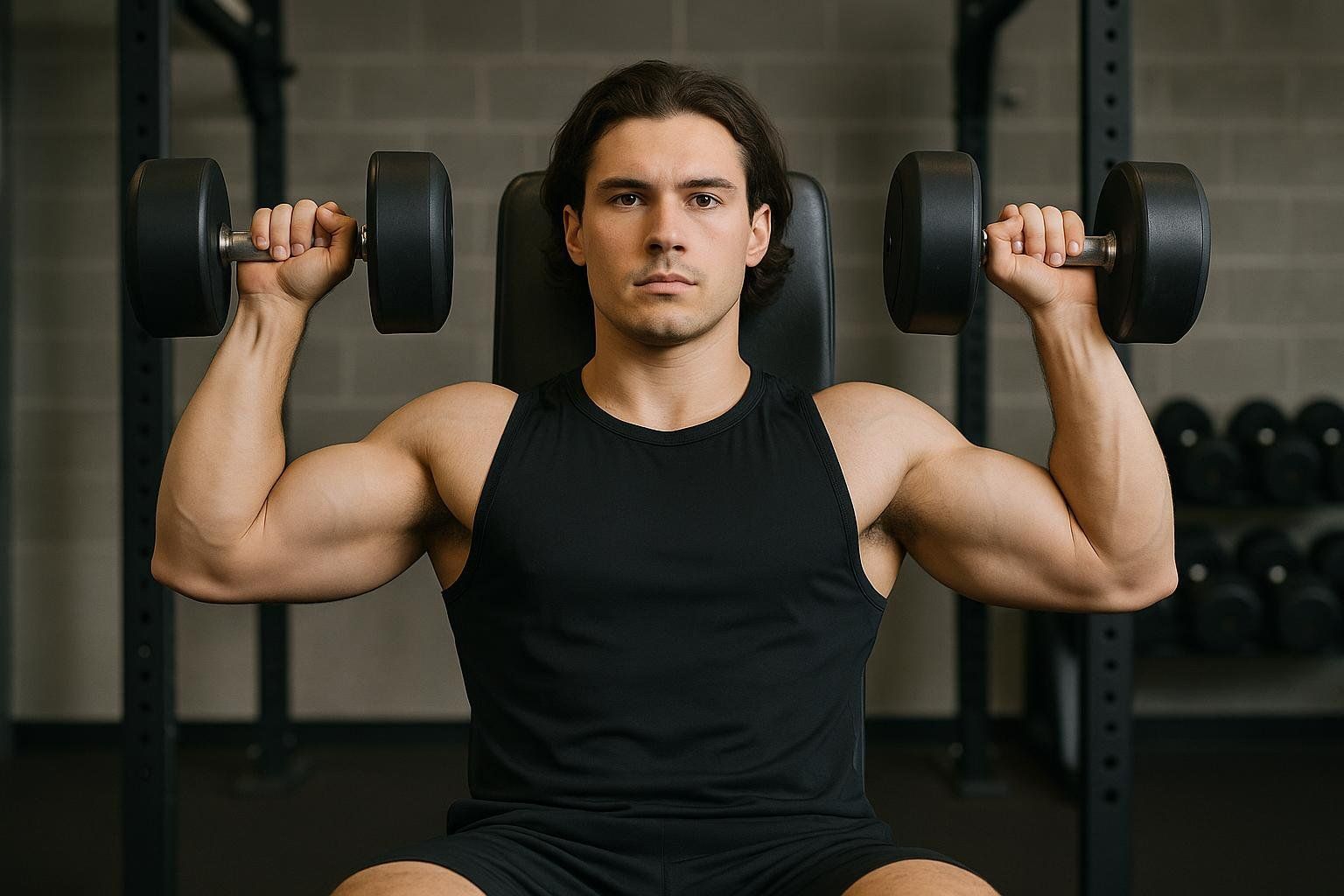
Equipment: Pair of dumbbells, adjustable bench (optional)
Muscles: Anterior & medial deltoids, triceps
How-to:
- Sit or stand with dumbbells at shoulder height, palms forward or neutral.
- Press overhead until arms are fully extended without aggressively locking the elbows.
- Lower under control until elbows reach ~90°.
Common errors: Using momentum from legs; allowing wrists to collapse backward.
3. 45° Incline Row
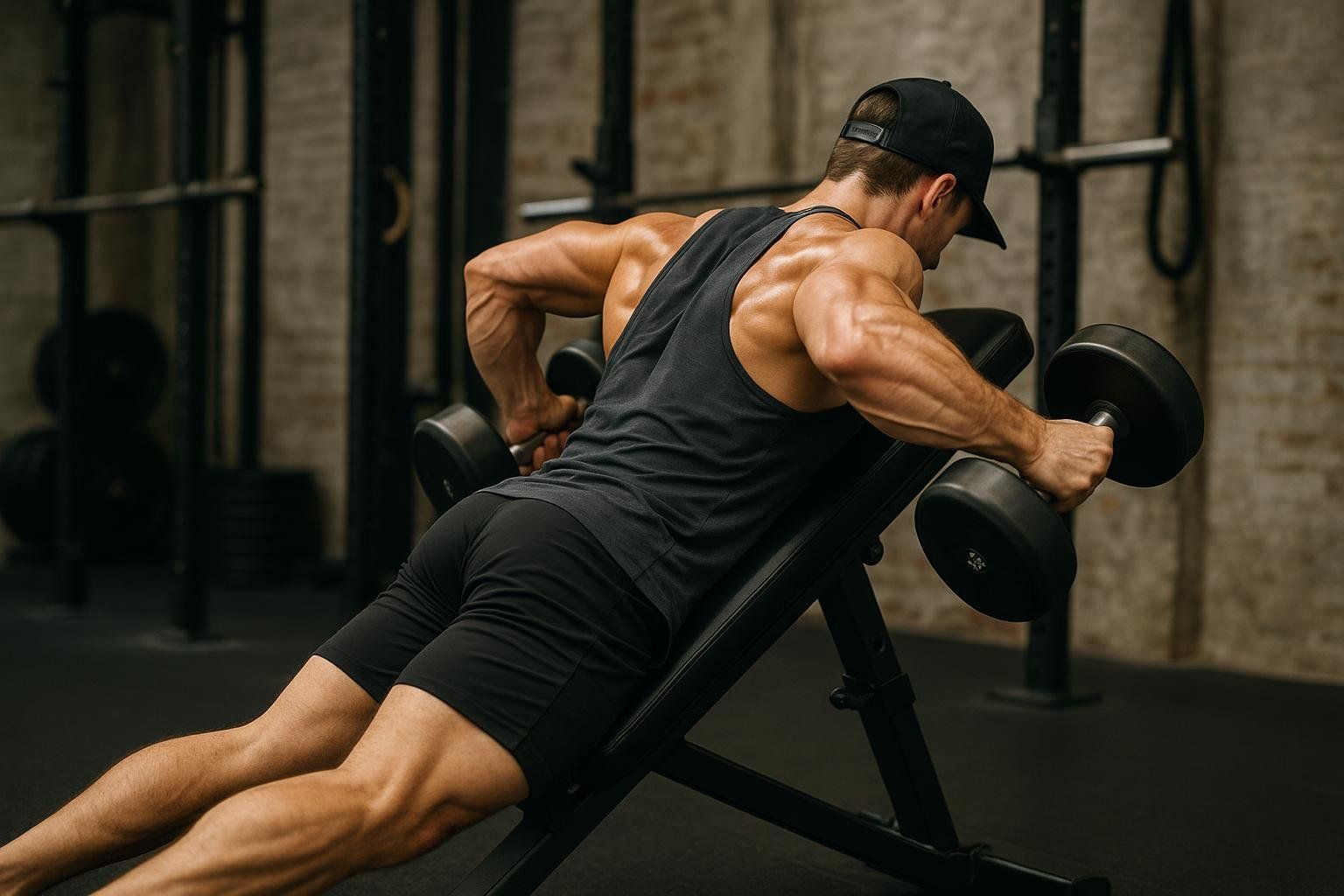
Equipment: Incline bench set to ~45°, dumbbells or barbell
Muscles: Medial & posterior deltoids, mid-back
How-to:
- Lie chest-down on the bench, arms hanging.
- Row weights toward lower chest, driving elbows out at roughly 45°.
- Squeeze the shoulder blades; lower slowly.
Common errors: Shrugging the shoulders; bouncing the weight off the bench.
4. Seated Rear Lateral Raise
Equipment: Dumbbells, flat bench
Muscles: Posterior deltoids, rhomboids
How-to:
- Sit on the edge of a bench, torso over thighs, palms facing each other.
- Raise arms out to the sides until elbows align with shoulders.
- Pause, then lower with control.
Common errors: Swinging the torso; letting thumbs point upward (reduces rear-delt tension).
5. Bent-Arm Lateral Raise
Equipment: Dumbbells
Muscles: Medial deltoids
How-to:
- Hold dumbbells at your sides with palms facing your body, elbows bent ~30°.
- Lift arms to shoulder height, leading with elbows.
- Pause briefly; lower on a two-second count.
Common errors: Straightening the elbows mid-rep; leaning the torso to cheat.
6. Cuban Press
Equipment: Light dumbbells or empty bar
Muscles: Rotator cuff, deltoids
How-to:
- Start with weights in front of thighs, palms facing the body.
- Pull elbows upward until upper arms are parallel to the floor.
- Rotate forearms so palms face forward, keeping elbows high.
- Press weights overhead until arms extend.
- Reverse the sequence under control to return to the start.
Common errors: Skipping the rotation step; using excessive load; arching the low back.
7. Band External Rotation
Equipment: Resistance band anchored at elbow height
Muscles: Infraspinatus, teres minor
How-to:
- Stand side-on, elbow tucked to ribcage at 90°.
- Rotate the forearm away from the body against band tension.
- Control the return.
Common errors: Letting the elbow drift; rotating the torso instead of the shoulder.
8. Face Pull
Equipment: Cable machine with rope at eyebrow height or resistance band
Muscles: Posterior deltoids, lower traps, rotator cuff
How-to:
- Grasp the rope with thumbs pointing backward.
- Pull toward the bridge of the nose while externally rotating the hands.
- Squeeze the shoulder blades; release slowly.
Common errors: Dropping the elbows; leaning backward excessively.
9. Pike Push-Up
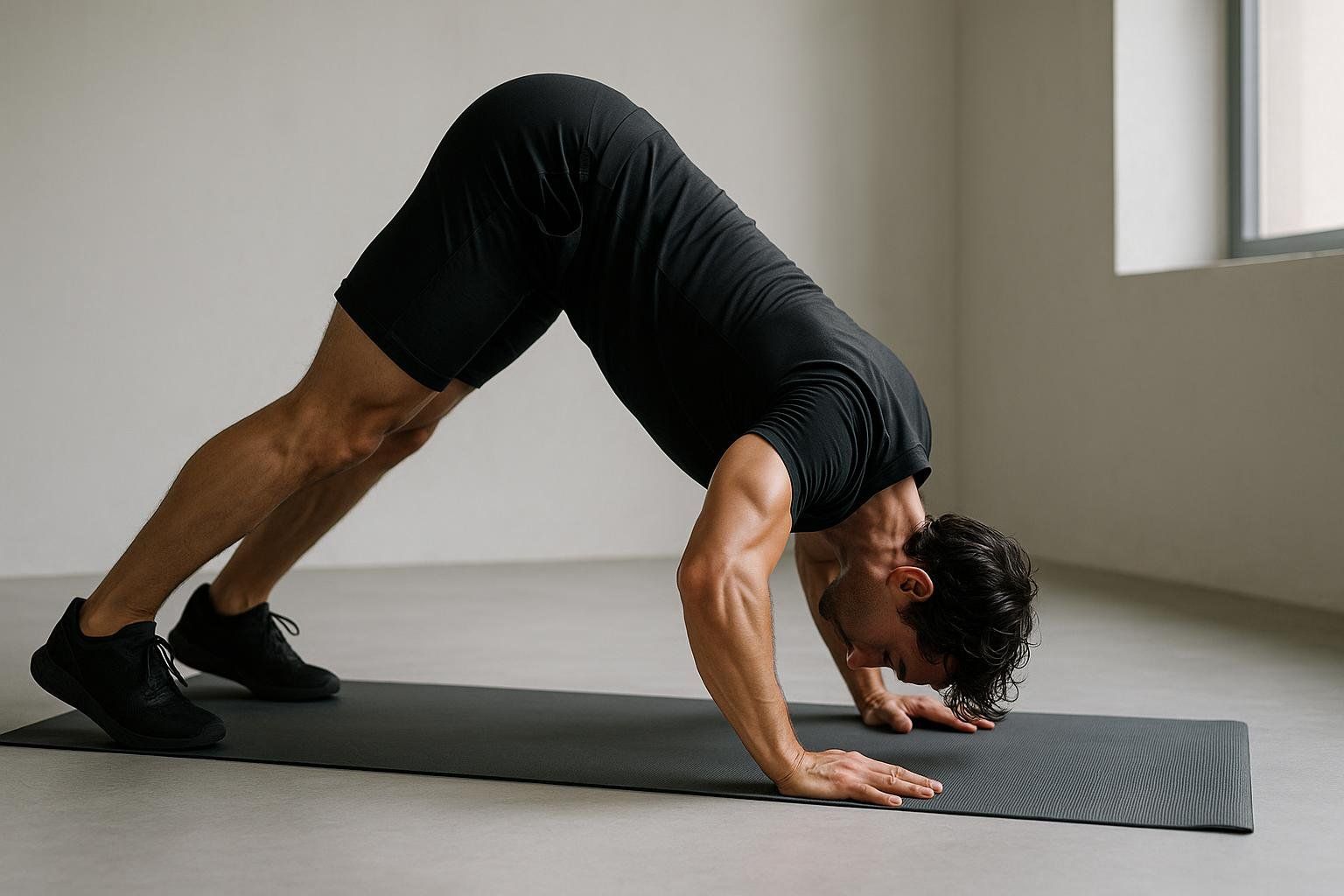
Equipment: Bodyweight, optional elevated feet
Muscles: Anterior deltoids, triceps
How-to:
- Begin in a downward-dog position, hips high.
- Bend the elbows, lowering the head between the hands.
- Press back to start, keeping hips high.
Common errors: Shifting weight toward the feet; flaring the elbows.
10. Single-Arm Landmine Press
Equipment: Barbell in landmine attachment or corner
Muscles: Anterior & medial deltoids, core stabilizers
How-to:
- Hold the bar near the chest with a neutral grip.
- Press forward-upward until the arm extends.
- Control the descent.
Common errors: Rotating the torso; over-extending the elbow at lockout.
Sample 4-Week Shoulder Workout Plan
Use this session as a stand-alone “shoulder day” or insert it into a push/pull routine.
| Exercise | Sets × Reps | Tempo (Seconds: Lower-Pause-Lift) | Rest |
|---|---|---|---|
| Dumbbell Shoulder Press | 3 × 10 | 2-0-1 | 90 s |
| Lateral Raise | 3 × 12 | 2-0-1 | 60 s |
| 45° Incline Row | 3 × 10 | 2-1-1 | 90 s |
| Face Pull | 2 × 15 | 2-0-1 | 45 s |
Progression:
• Week 2: Add 5 lb per exercise or perform 2 extra reps per set.
• Week 3: Return to Week 1 loads but shorten every rest interval by 15 seconds.
• Week 4: Add another 5–10 lb (or 2 reps) compared with Week 2.
Warm-Up & Mobility: Bulletproof Your Joints
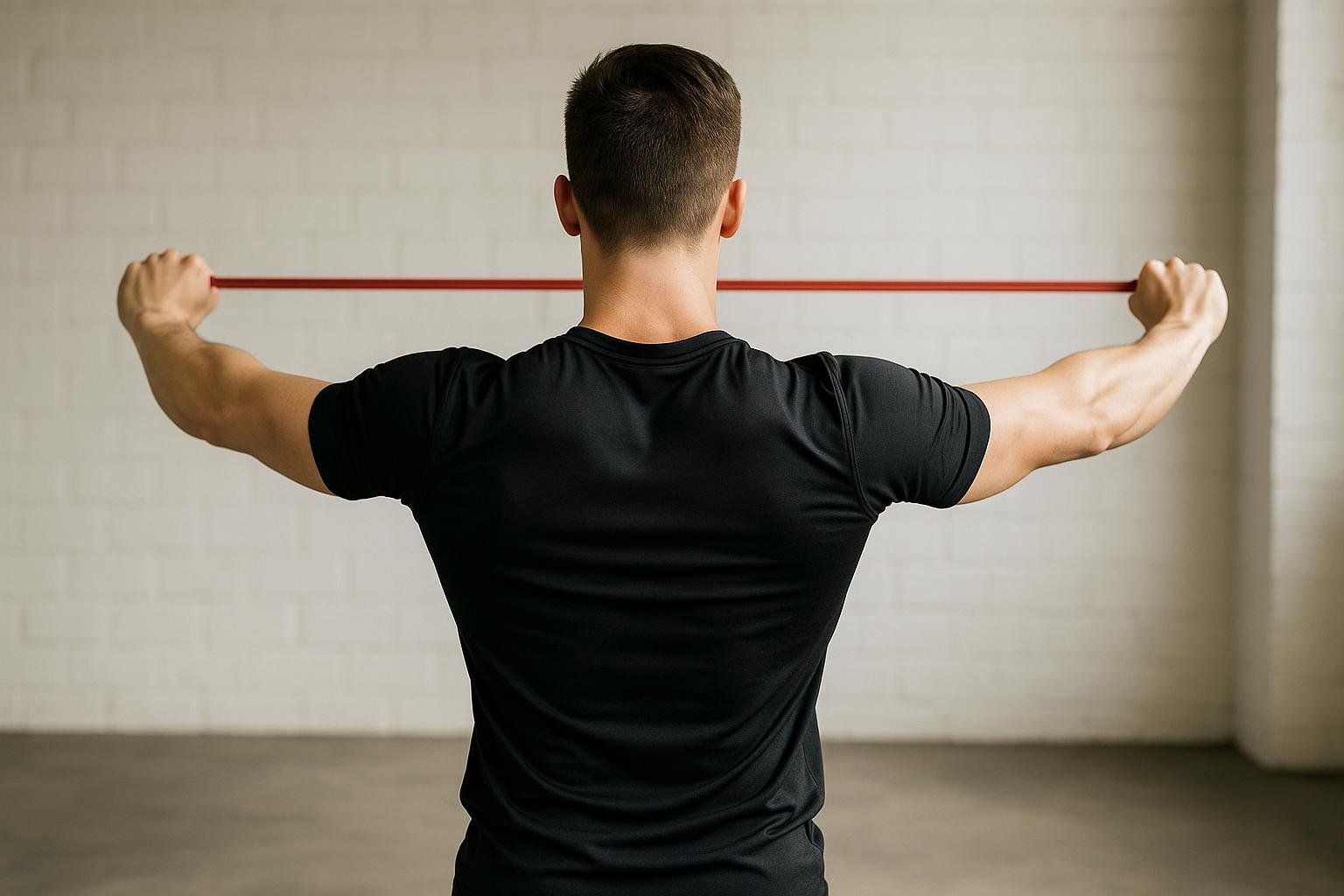
This 5–7 minute routine is crucial for activating stabilizers and preventing injury.
- Foam-Roll Lats & Pec Minor – 30 sec each side
- World’s Greatest Stretch – 5 reps/side
- Band Pull-Apart – 2 × 15
- Scapular Wall Slides – 2 × 10
- Band External Rotation – 2 × 12
For a deeper dive into joint prep, check out our guide to mobility and flexibility.
Gym-to-Home Substitutions
Need alternatives for limited equipment? Use the table below when following the main program at home.
| Gym Movement | Home-Friendly Alternative |
|---|---|
| Overhead Barbell Press | Pike Push-Up or Handstand Hold |
| Dumbbell Lateral Raise | Backpack Lateral Raise (fill with books) |
| Cable Face Pull | Resistance Band Face Pull |
| Band External Rotation | Band External Rotation (loop band around a door hinge) |
Sample At-Home Shoulder Circuit
Perform the following circuit 3 times. Rest 60 seconds between rounds.
- Pike Push-Up – 8 reps
- Backpack Lateral Raise – 12 reps
- Band Face Pull – 15 reps
- Band External Rotation – 15 reps per arm
Tracking Your Progress With DEXA
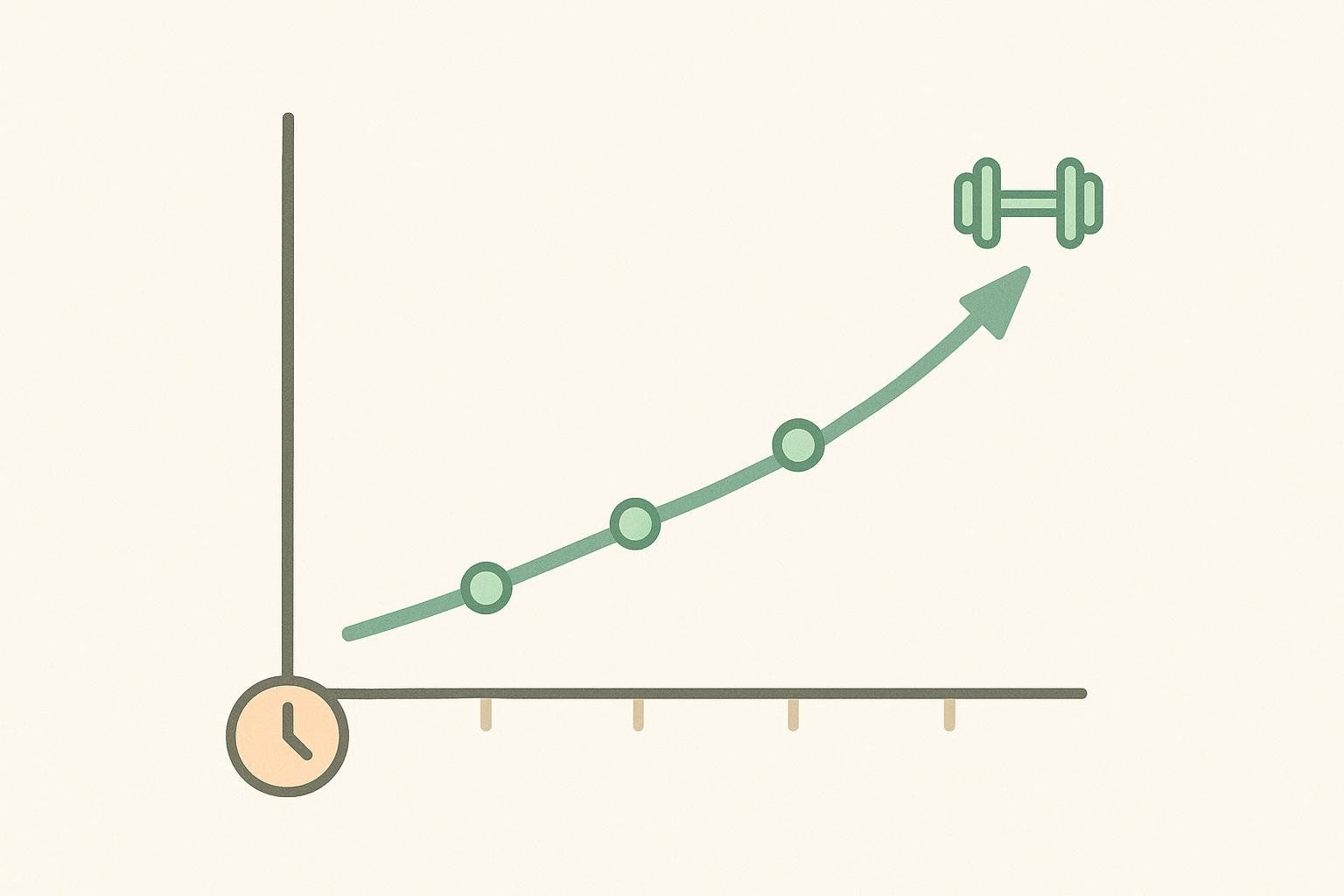
Shoulder circumference is nice, but lean-mass data is better. A BodySpec DEXA scan quantifies muscle mass in your arms and torso, letting you see exactly how much tissue you’ve added after an 8-week cycle. Book your scan, run the program, scan again—no more guessing.
Learn more in our beginner’s guide to body recomposition.
FAQs
How often should I train shoulders?
Most lifters thrive on 10–20 shoulder-focused sets per week (split over 2–3 sessions). Beginners can start closer to 10; advanced lifters breaking plateaus may edge toward 20.
Can I build shoulders at home?
Yes—pike push-ups, handstand holds, resistance bands, and weighted backpacks cover all movement patterns.
Is overhead pressing safe after a rotator cuff injury?
Get medical clearance first. Start with pain-free range, light resistance bands, and consult our injury-prevention tips.
What rep range is best for shoulder growth?
Hypertrophy occurs anywhere from 6–20 reps as long as sets approach 1–2 reps shy of failure.
Next Steps
- Screenshot or print the 4-Week Workout Plan above.
- Schedule a BodySpec DEXA scan to establish your baseline.
- Re-scan after 8–12 weeks to quantify muscle gains.
- Share your transformation and tag @BodySpec on social media.
Ready to put this plan into action? Book your scan and start raising the bar on your shoulder workouts today.
